Less emissions and less noise equals less power – but heaps more fun, thanks to more torque, more rideability and more accessibility for riders of all levels of experience.
MV Agusta’s three-cylinder engine has been completely overhauled in pursuit of Euro 4 compliance. It has a backwards-rotating 120º crank for quicker steering via decreased crankshaft inertia, new cam profiles and timing, a bigger airbox incorporated with the reshaped 16.5-litre fuel tank and an all-new exhaust with bigger silencer canisters. There’s also revised engine mapping with a choice of Sport, Normal/Touring and Rain modes, plus one Custom setting with increased options, and eight levels of switchable traction control.

So while this results in a claimed 116bhp at the crankshaft at 11,500 rpm, down 6.7kW from the 2015 model, there’s a corresponding increase in maximum torque, peaking with 83Nm at 7600 rpm, compared to the previous 78Nm a thousand revs higher. The six-speed gearbox has unchanged ratios, but for the first time there’s a two-way clutchless EAS 2.0 Up-Down quickshifter included as standard, a category first that helps explain the price gap over the MT-09.
The uprated chassis retains MV Agusta’s trademark composite design with a tubular steel upper spaceframe bolted to cast aluminium sideplates, in which the single-sided cast alloy swingarm pivots.
The swingarm has been lengthened 20mm, extending the wheelbase to 1400mm. There’s more conservative steering geometry, too, with trail now increased to 103.5mm from 95mm on the previous model, while the head angle has been kicked out a full degree to 24.5º.
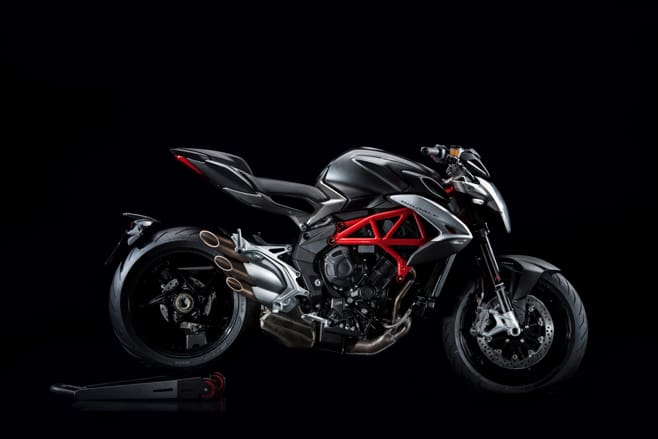
The fully adjustable suspension remains unchanged at both ends, with a Sachs monoshock giving 124mm of travel at the rear via its progressive-rate link, and a 43mm Marzocchi upside down fork up front with 125mm of travel.
The Brutale 800’s Brembo brake package is also unchanged, with radially mounted four-piston calipers gripping twin 320mm discs up front, and a single 220mm disc with twin-piston caliper at the rear. It has switchable Bosch 9 Plus ABS, complete with RLM/Rear Lift-Up Mitigation. Dry weight of the 2016 Brutale 800 is 175kg – 8kg more than the outgoing model.

The 2016 Brutale 800 has been subtly restyled by Spanish designer Carlos Solsona. There’s an all-new LED headlamp up front, while the rear light is also LED, incorporated in an all-new seat cowl mounted on a new cast aluminium subframe. There’s also a redesigned dash, which rather surprisingly isn’t a full colour TFT item.
The cast aluminium five-spoke wheels carry Pirelli’s latest Diablo Sport Rosso III rubber – the new MV is the first model to wear these as standard. Pirelli claims they are best suited to nakedbikes, with a new tread pattern aimed at improved wet weather use, and a dual compound rear for extra side grip.
Just streetfighting my way out of Melbourne gave me an immediate introduction to the new Brutale’s radically changed personality. The riding position is a little more upright than before with your feet slightly further back, and it’s fairly comfortable in spite of the hard padding on the relatively high 830mm tall seat.
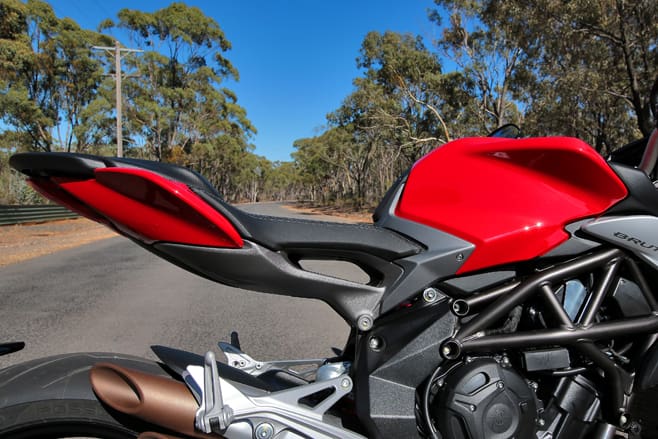
Given room, the Brutale 800 will pull wide open from just 2000rpm upwards, with an ultra-smooth torque delivery which you can feel tops out as early as 4000rpm, then holds all the way to the 12,000rpm redline.
The three-cylinder 800 motor is a super-responsive package, and because of the extra midrange grunt you’ll find yourself short-shifting at around 9000rpm on the wide-open quickshifter, just to surf the waves of torque. Thanks to the auto-blipper, which is also now included as standard, you need never touch the clutch lever after setting off until you come to a halt.
The three standard riding modes are accessible on the move. Each has its own fuel map offering a different response via the ride-by-wire throttle. The Rain mode sees power restricted to 60kW with a more gradual pick-up. The Normal mode is great for low speeds, yet also delivers zestful acceleration and access to that delightful midrange grunt with plenty of brio – I found myself using it most of the time. Sport means what it says on the label; there really is a much more aggressive pick-up from a closed throttle that’ll make you check on your TC setting.
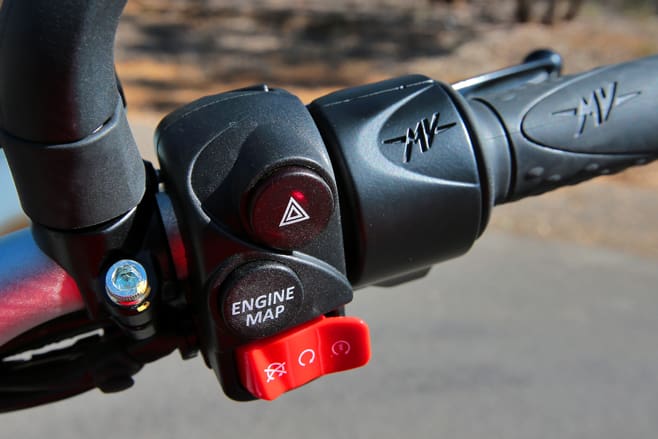
In spite of its more conservative steering geometry as well as the longer wheelbase, the Brutale 800 remains quick-steering and agile, via the good leverage from the relatively high-set but pulled-back handlebar.
The Brutale was delivered to me with a very stiff setting of the Sachs rear shock, which like the Marzocchi fork seemed rather oversprung and not very compliant over rougher road surfaces. I didn’t have the chance to play around with the settings, but I’m sure being fully adjustable, a softer set-up could be dialled in.
Is the new MV Agusta Brutale 800 worth the extra money over the Ducati Monster 821 and Yamaha MT-09, which are likely to be its key marketplace rivals?
Well, apart from the gorgeous styling, the noticeably enhanced build quality, and the undoubted presence the new Brutale has, it has a hydraulic slipper clutch and an up/down quickshifter/autoblipper – so maybe for those who can afford it, the answer must be yes. It’s an outstanding motorcycle which augurs well for the similarly uprated such models coming from MV.
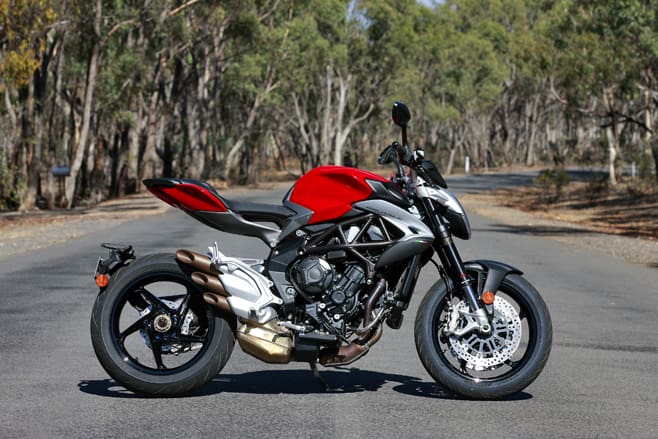
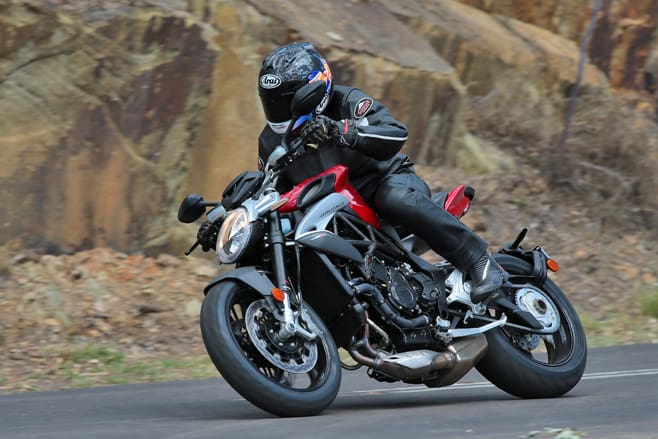
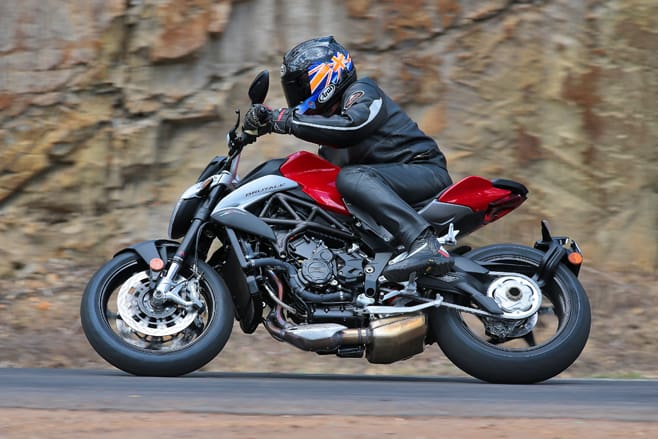
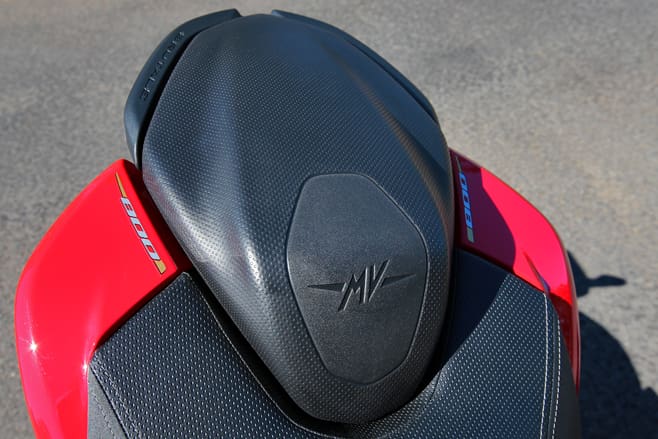
Photography by Stephen Piper











